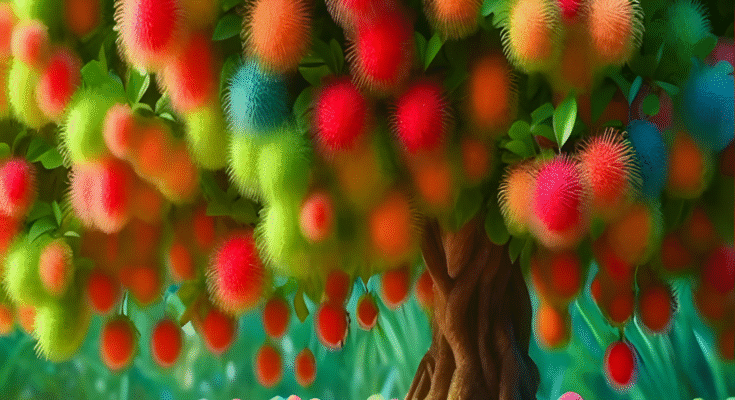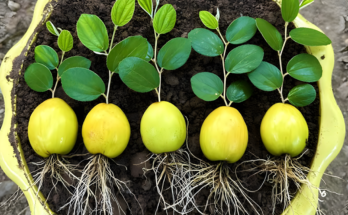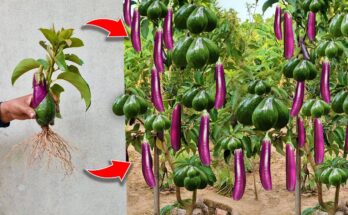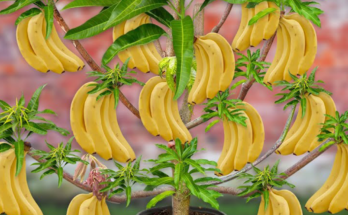Method of Growing and Propagating Rambutan Fruit Trees
Rambutan (Nephelium lappaceum) is a tropical fruit tree native to Southeast Asia, well-loved for its juicy, sweet, and slightly acidic flesh covered by a hairy red or yellow shell. If you want to grow your own rambutan trees and enjoy their delicious fruit, understanding the right method of growing and propagating rambutan is essential. In this article, we will explore everything you need to know about successfully growing and propagating rambutan fruit trees for a healthy harvest.
1. Choosing the Right Location
Rambutan is a tropical tree that thrives in warm, humid environments. To grow it successfully, choose a location that meets the following conditions:
- Temperature: Rambutan requires consistent warmth—ideally between 22°C to 35°C (72°F to 95°F). It cannot tolerate frost or cold weather.
- Rainfall & Humidity: It grows best in areas with high humidity and annual rainfall of at least 2,000 mm. A humid climate is important for fruit development.
- Soil Requirements: Well-draining, deep, fertile soils rich in organic matter are ideal. Slightly acidic to neutral soil (pH 5.5 to 6.5) is preferred.
- Sunlight: Full sunlight is necessary for optimal growth. Avoid shady areas, as rambutan needs direct sunlight for at least 6–8 hours per day.
2. Methods of Propagation
Rambutan can be propagated in two main ways: from seeds and vegetatively (grafting or air-layering). Each method has its benefits and drawbacks.
A. Growing Rambutan from Seeds
- Seed Selection: Use fresh seeds from ripe and healthy fruits. Seeds lose viability quickly, so plant them within a few days of extraction.
- Seed Preparation: Wash seeds clean and soak them in lukewarm water for 1–2 days to soften the seed coat.
- Planting: Sow the seed in a pot or nursery bed with rich, loose soil. Plant 2-3 cm deep and water regularly.
- Germination: Seeds usually germinate within 10 to 21 days. Keep them in partial shade during early growth stages.
- Transplanting: Once seedlings are 30–40 cm tall and have 6–8 leaves, they can be transplanted to the main site.
Note: Rambutan trees grown from seed take 5 to 8 years to bear fruit and may not produce the same quality as the parent tree.
B. Vegetative Propagation (Preferred Method)
To get fruit faster and ensure the tree retains the parent’s desirable traits, vegetative methods are better.
i. Grafting
- Scion and Rootstock: Select a healthy seedling (1 year old) as rootstock and a branch from a productive mature tree as the scion.
- Cleft or Veneer Grafting: Make a slanting cut on both scion and rootstock and join them securely using grafting tape or plastic wrap.
- Healing: Keep the grafted plant in a shaded, moist area. Union takes 2–4 weeks. Once successful, remove the wrapping and allow gradual sun exposure.
ii. Air Layering (Marcottage)
- Branch Selection: Choose a 1- to 2-year-old healthy branch about the thickness of a pencil.
- Wound the Branch: Remove a ring of bark (2–3 cm wide) and scrape off the cambium layer.
- Apply Rooting Hormone: (Optional) Apply a rooting hormone to encourage root growth.
- Wrap with Moss or Soil: Cover the wound with moist sphagnum moss or soil, wrap in plastic, and secure tightly.
- Wait for Roots: In about 6–8 weeks, roots will develop. Once roots are visible through the plastic, cut the branch below the root zone and plant it in a pot or directly in the ground.
3. Planting Rambutan Trees
Once you have a grafted plant or seedling ready, follow these steps to plant it successfully:
- Dig a Hole: At least 50x50x50 cm in size. Mix compost or rotted manure with the dug-out soil.
- Spacing: Plant trees 8–10 meters apart to allow proper canopy development.
- Planting: Place the seedling gently into the hole, cover with soil, and press firmly.
- Watering: Water immediately and keep the soil moist but not waterlogged during the first few weeks.
4. Caring for Rambutan Trees
Proper care is essential to grow healthy rambutan trees that bear good fruit.
A. Watering
- Regular watering is crucial, especially during dry seasons.
- Use mulch around the base to retain moisture and prevent weeds.
B. Fertilizing
- Apply organic compost or farmyard manure every 3–4 months.
- Use balanced NPK fertilizer (e.g., 15-15-15) during the growing stage.
- Increase potassium (K) before flowering to boost fruiting.
C. Pruning
- Prune in the first 2 years to develop strong framework branches.
- Remove dead, diseased, or overcrowded branches to promote airflow and sunlight.
D. Pest and Disease Control
- Watch for pests like fruit borers, mealybugs, and ants.
- Fungal infections such as anthracnose and root rot can occur in poorly drained soil.
- Use organic insecticides or neem oil for minor infestations.
5. Harvesting Rambutan Fruits
- Rambutan trees begin to bear fruit in 2–4 years (grafted) or 5–8 years (seed-grown).
- Fruits mature in 15–20 weeks after flowering.
- Harvest when the fruits turn fully red or yellow, depending on the variety.
- Use clippers or handpick carefully to avoid damaging the branches.
Conclusion
Growing and propagating rambutan trees is rewarding with the right method and care. While seed propagation is simple, vegetative methods like grafting or air layering ensure faster fruiting and better fruit quality. With the right site, soil, and care practices, you can enjoy a lush harvest of sweet, juicy rambutans right from your backyard. Whether you’re a backyard gardener or a small-scale farmer, mastering these techniques can lead to a successful rambutan growing experience.



